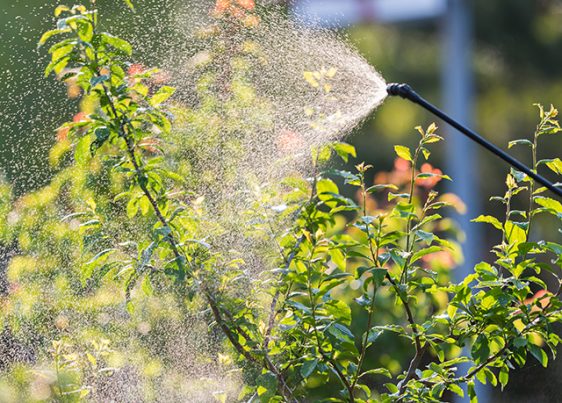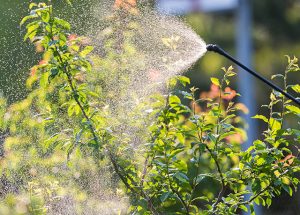
Spinosad – toxicity, side effects, diseases and environmental impacts
Friday, November 17, 2017 by Janine Acero
http://www.naturalpedia.com/spinosad-toxicity-side-effects-diseases-and-environmental-impacts.html

Spinosad is a natural substance derived from a soil bacterium called Saccharopolyspora spinosa. It is a mixture of two chemicals: spinosyn A and spinosyn D. The technical substance appears as a white-grey crystalline solid.
Spinosad is an environmentally-friendly insecticide that quickly and safely controls a variety of insect pests like leafminers, spider mites, mosquitoes, ants and fruit flies. It is especially effective against caterpillars, beetles and thrips that target annual and perennial flowering plants.
It is often supplied as a soluble concentrate that is mixed with water and used as a spray. It is applied to a wide range of crops, namely: onions and leeks, corn, lettuce and other leafy vegetables, potato, eggplants, pepper, tomato, celery, grapes, cane fruits, berries, currants, herbs and flowers.
Spinosad has been registered for use in pesticides by the U.S. Environmental Protection Agency (EPA) since 1997 and was granted organic status by the USDA National Organic Program (NOP) in 2003. Spinosad is also found in some drugs regulated by the U.S. Food and Drug Administration (FDA) that are used to control head lice on people and fleas on pets.
Spinosad is known by other trade names: Monterey Garden Insect SprayR, Ferti-lomeR Borer, Bagworm, Leafminer & Tent Caterpillar Spray, and Bulls-EyeTM Bioinsecticide.

List of known side effects
Dogs, sheep and goats tolerate spinosad well, although intoxication cases with dogs have been reported, with symptoms including loss of appetite, lethargy, vomiting, diarrhea, coughing, drooling, trembling, itching and redness of the skin.
Acute exposures to spinosad caused irritation to the eyes and skin of rabbits in controlled animal studies, and high doses in rodent models resulted in loss of weight and muscle atrophy, among other symptoms. Deaths were even reported in high toxicity studies in rats.
Spinosad is very toxic to aquatic life but not likely to be carcinogenic to humans, as per the EPA.
Body systems affected by spinosad
An 80-year-old woman in Taiwan attempted suicide by drinking a pesticide mixture, in which spinosad was the main compound. The patient experienced neurological effects, mainly shock, respiratory failure, pneumonitis, and urinary retention. However, the patient recovered after resuscitation, detoxification procedures, and intensive care.
While generally safe, spinosad can affect the thyroid, parathyroid glands, liver, kidney, reproductive tissues, stomach, lung, and skeletal muscle, in chronic exposures.
Items that can contain spinosad
Substances and organisms related to spinosad include:
- Propylene glycol
- Saccharopolyspora spinosa
- Spinosyn A
- Spinosyn D
Currently, spinosad is found in over 80 registered pesticide products, many of which are used on agricultural crops and ornamental plants. These products are commonly sprays, dusts, granules, and pellets.
How to avoid spinosad
General safety precautions still apply before handling, mixing and applying spinosad. Use splash proof glasses to protect your eyes and wear coveralls to prevent any contact with skin. For handlers and applicators in the workplace, it is important to refer to the product label for protective clothing and equipment.
Where to learn more
- More proof: Pesticides are killing honeybees
- Oh how lovely: Drug-resistant HEAD LICE now plaguing U.S. children
- Is your organic produce really pesticide-free?
- How to get rid of lice naturally
- Pesticides.news
Summary
Spinosad is an environmentally-friendly insecticide used to control caterpillars, beetles and thrips, among other insect pests.
Spinosad is derived from a soil bacterium called Saccharopolyspora spinosa.
Spinosad has been registered for use in pesticides by the EPA and granted organic status by the NOP.
Spinosad is generally safe but can still affect various bodily functions in high exposures.
Sources include:
Tagged Under: Tags: Spinosad





